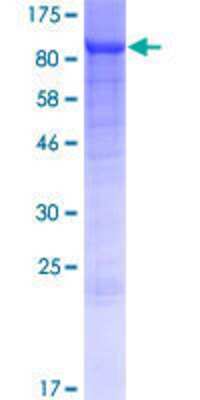ACSL5: Proteins and Enzymes
Long-chain-fatty-acid--CoA ligase 5, or ACSL5, is an isozyme of the long-chain fatty-acid-coenzyme A ligase family. These proteins play an important role in both synthesis of cellular lipids and degradation via beta-oxidation. Like other isozymes of this family, ALCS5 converts free long-chain fatty acids into fatty acyl-CoA esters. Specifically, ACSL5 may activate fatty acids from exogenous sources for the synthesis of triacylglycerol destined for intracellular storage.
This isozyme is highly expressed in uterus and spleen, and in trace amounts are found in normal brain. It also has significantly increased expression in malignant gliomas, where the protein functions in mediating fatty acid-induced glioma cell growth. Therefore, ALCS5 is thought to have a key role in the survival of glioma cells and may be a potential target for novel cancer treatments. Three transcript variants encoding two different isoforms have been found for this gene.
Show More
This isozyme is highly expressed in uterus and spleen, and in trace amounts are found in normal brain. It also has significantly increased expression in malignant gliomas, where the protein functions in mediating fatty acid-induced glioma cell growth. Therefore, ALCS5 is thought to have a key role in the survival of glioma cells and may be a potential target for novel cancer treatments. Three transcript variants encoding two different isoforms have been found for this gene.
2 results for "ACSL5 Proteins and Enzymes" in Products
2 results for "ACSL5 Proteins and Enzymes" in Products
ACSL5: Proteins and Enzymes
Long-chain-fatty-acid--CoA ligase 5, or ACSL5, is an isozyme of the long-chain fatty-acid-coenzyme A ligase family. These proteins play an important role in both synthesis of cellular lipids and degradation via beta-oxidation. Like other isozymes of this family, ALCS5 converts free long-chain fatty acids into fatty acyl-CoA esters. Specifically, ACSL5 may activate fatty acids from exogenous sources for the synthesis of triacylglycerol destined for intracellular storage.
This isozyme is highly expressed in uterus and spleen, and in trace amounts are found in normal brain. It also has significantly increased expression in malignant gliomas, where the protein functions in mediating fatty acid-induced glioma cell growth. Therefore, ALCS5 is thought to have a key role in the survival of glioma cells and may be a potential target for novel cancer treatments. Three transcript variants encoding two different isoforms have been found for this gene.
Show More
This isozyme is highly expressed in uterus and spleen, and in trace amounts are found in normal brain. It also has significantly increased expression in malignant gliomas, where the protein functions in mediating fatty acid-induced glioma cell growth. Therefore, ALCS5 is thought to have a key role in the survival of glioma cells and may be a potential target for novel cancer treatments. Three transcript variants encoding two different isoforms have been found for this gene.
| Applications: | WB, ELISA, MA, AP |
| Applications: | AC |

